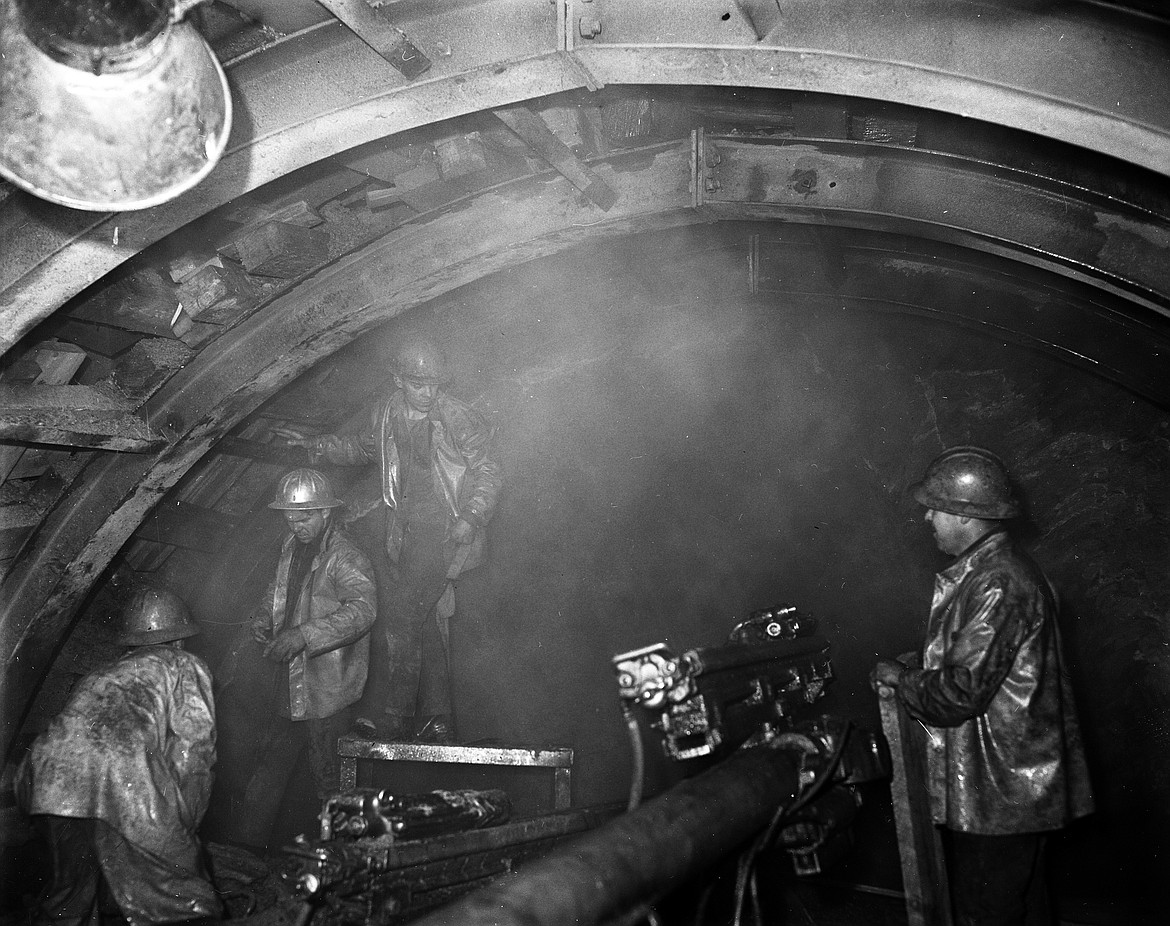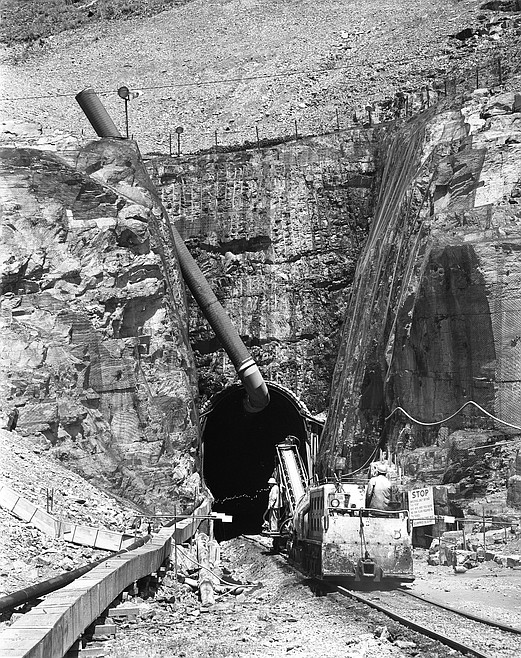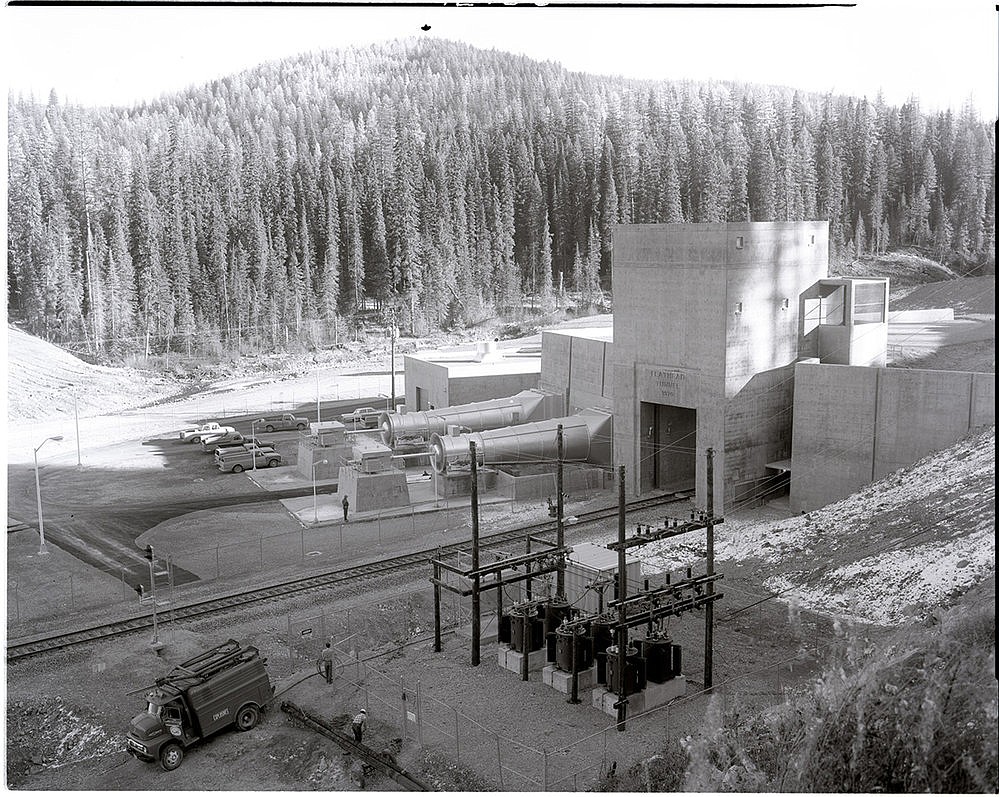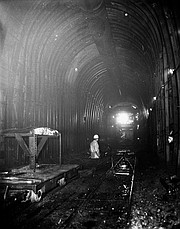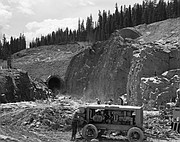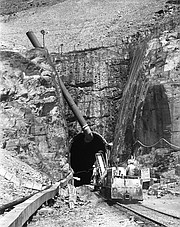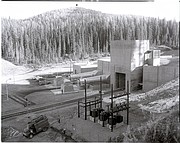Trego railroad tunnel major construction feat
At 11:10 a.m. on the morning of June 21, 1968 one final blast connected to the two holes being drilled beneath the Salish Mountains. Using a special circuit originating at his desk in the White House, President Lyndon Johnson initiated the explosion, bringing down the final wall of stone and uniting the northern (Yankee) and southern (Rebel) drilling crews on what is now known as BNSF Railway’s Flathead Tunnel near Trego.
In just over two years, the drilling crews had hollowed out the 7.01-mile hole through the Salish Mountains and on Nov. 7, 1970, the second-longest railroad tunnel in the United States was placed in service.
While the project was completed in 1970, the story of the Flathead Tunnel actually begins two decades earlier, with the Congressional authorization of the Flood Control Act of 1950 and the initial planning for the construction of the Libby Dam.
While some route selection and preliminary planning for the Flathead Tunnel were done during that time period, it was not continued until 1961, in preparation for the signing of the Columbia River Treaty on Sept. 16, 1964.
With the construction of the Libby Dam beginning in the summer of 1966, nearly 60 miles of the Burlington Northern Railway's main trans-continental rail line would have to be relocated with the creation of Lake Koocanusa.
Records from the time period show that a number of railroad routes were initially studied between 1948 and 1954 and finally narrowed down to five possible routes. Routes were eventually discarded for various reasons with all those discarded involving either longer mileage or longer tunnels. Other routes examined required tunnel lengths ranging from 5.8 to 12 miles.
The contract for tunnel excavation was awarded to the Walsh Construction Company and S.J. Groves and Sons (who worked in cooperation under the name Walsh-Groves) April 19, 1966 with a bid of $43,906,727. Work began at the site May 12, 1966 with the first tunnel round detonated in the south heading Sept. 30, 1966.
Just 488 working days, and 2.1 million pounds of explosives later, drilling was completed June 21, 1968. The north and south crews combined to detonate 6,754 rounds of explosives and advanced at a peak speed of 66-feet per day.
With drilling complete, concrete lining of the tunnel was completed June 21, 1968, with nearly half of the concrete placed during a severe winter season.
A large fan-driven ventilation system was put into place, using a large metal door on the north portal and large fans to push air into the face of east-bound trains. The system not only cooled the engines, which would be going slightly uphill heading east, it also helped clear the tunnel of diesel exhaust fumes from the trains as they made their way through the tunnel.
There were a few bumps along the way, including one support collapse in the tunnel and one portal slide condition that developed during construction.
Two people were killed during construction of the tunnel, one involving a person working on a compressed air line and the other an accident with a front-end loader, but both accidents occured after drilling had been completed.
At 7.01 miles in length, the Flathead Tunnel is the second longest railroad tunnel in the United States, exceeded in length only by Washington’s 7.79-mile Cascade Tunnel, which was built from 1926 to 1929. Both tunnels are operated by the Burlington Northern Railroad.
The Flathead Tunnel is the third-longest railroad tunnel in North America, behind the Cascade Tunnel and Canada’s 9.11-mile Mount Macdonald Tunnel.
The longest railroad tunnel in the world, Switzerland’s 35.47-mile Gotthard Base Tunnel, began service in the Alps in 2016.

